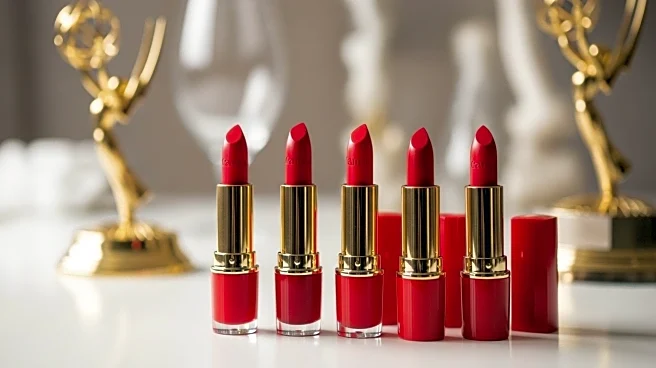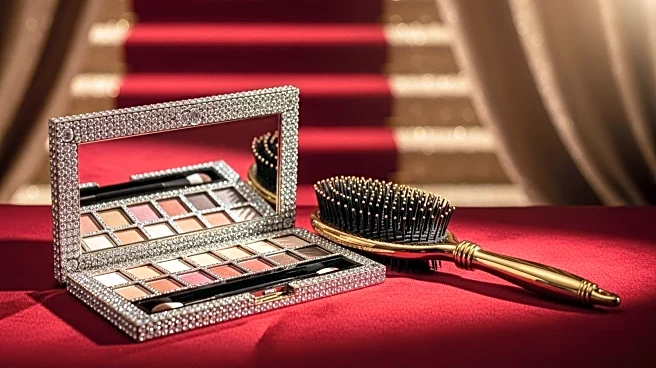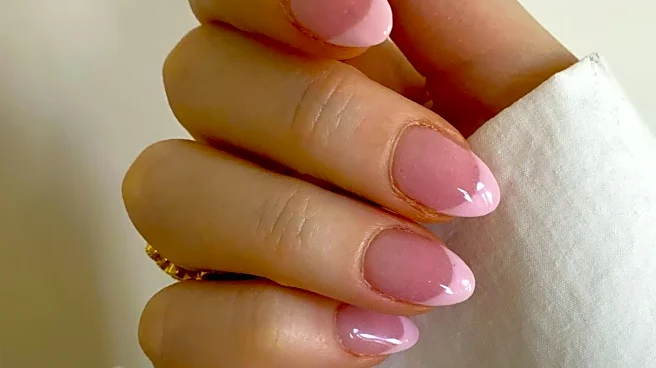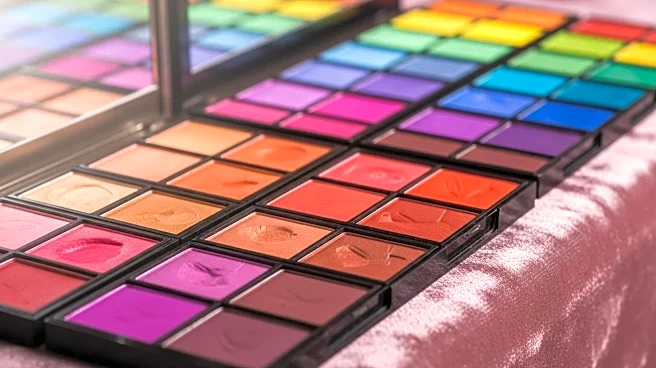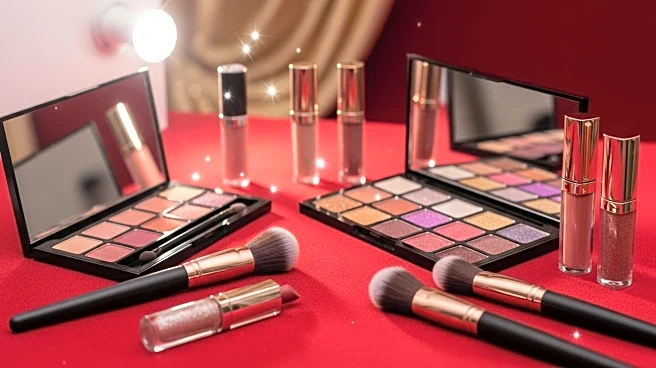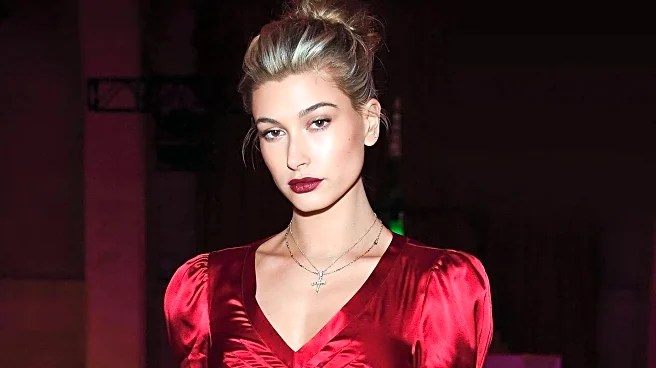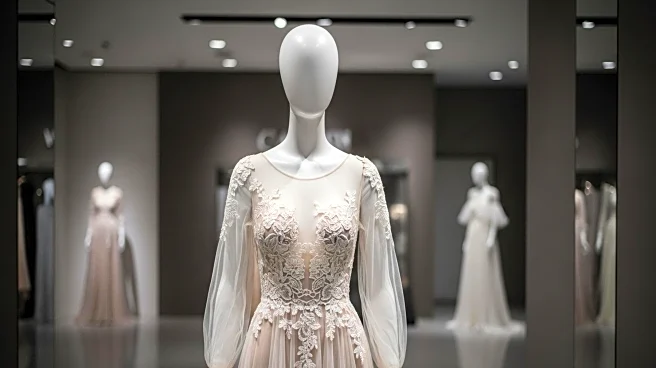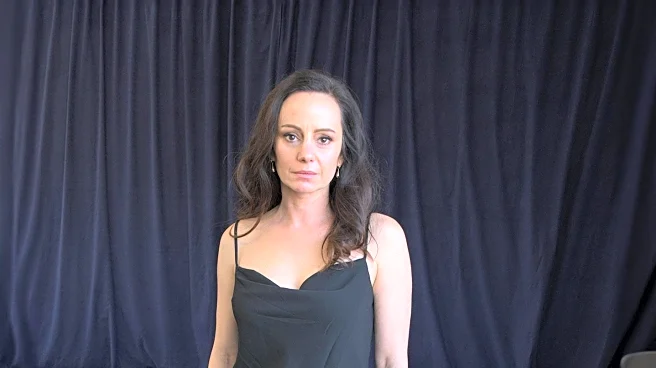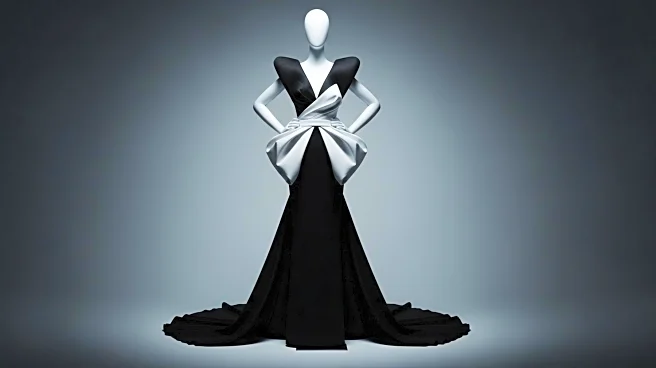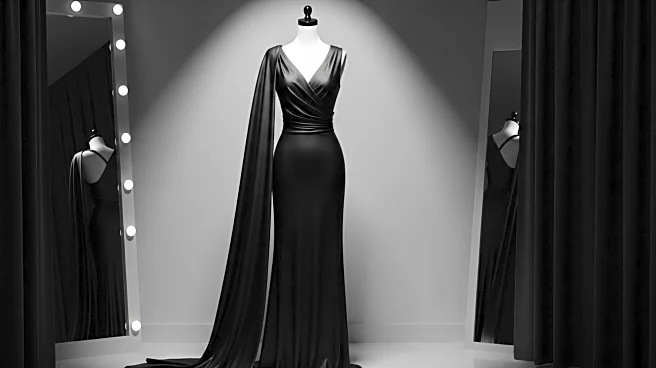What's Happening?
At the 2025 Emmy Awards, several celebrities made a statement with bold red lipstick, contrasting their otherwise neutral ensembles. Notable attendees such as Gwendoline Christie, Kathy Bates, Meg Stalter, and Jen Tullock showcased this trend on the red carpet. Christie, nominated for her role in 'Severance,' paired her powder pink Tom Ford suit with a deep red lip, while Bates, the oldest nominee in the lead drama actress category, complemented her espresso brown satin dress with a striking red lip. Tullock added a bright lip to her all-black outfit, and Stalter made a political statement with her casual attire, featuring a 'Cease Fire!' slogan handbag, while also sporting a red lip and nails.
Why It's Important?
The choice of red lipstick by these celebrities at the Emmys highlights a significant trend in the beauty industry, where bold lip colors are used to make a statement. This trend reflects a shift towards using makeup as a form of self-expression and political commentary, as seen with Meg Stalter's outfit. The emphasis on red lips also influences consumer preferences, potentially driving sales for beauty brands that offer similar products. This trend underscores the role of high-profile events like the Emmys in setting fashion and beauty standards, impacting both industry practices and consumer behavior.
What's Next?
As the trend of bold lip colors continues to gain traction, beauty brands may focus on expanding their product lines to include more vibrant shades and innovative formulations. The influence of celebrity endorsements at major events like the Emmys could lead to increased marketing efforts and collaborations between brands and celebrities. Additionally, the use of makeup as a form of political expression may inspire more individuals to use fashion and beauty as platforms for advocacy, potentially leading to more diverse and inclusive beauty campaigns.
Beyond the Headlines
The use of red lipstick at the Emmys not only reflects current beauty trends but also highlights the cultural significance of makeup as a tool for personal and political expression. This development may encourage discussions about the role of fashion and beauty in societal issues, prompting brands to consider ethical and cultural dimensions in their marketing strategies. The intersection of beauty and politics, as demonstrated by Meg Stalter, could lead to broader conversations about the responsibilities of public figures in using their platforms for advocacy.
